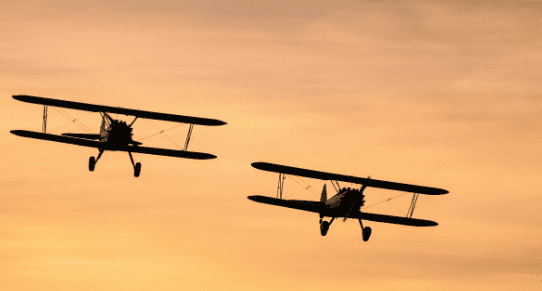Planes have not had a face-lift in decades. Whether you imagine a jumbo jet or a small passenger plane, they all have that familiar shape to them. The Boeing 737 is a great example of this. Since it first flew back in 1967, the look has hardly changed, even from the latest version, the 737 Max. But big changes are afoot, and these changes could completely transform what planes look like.
Why? The aviation industry really needs to do some reductions in carbon emissions. Airplanes account for roughly 2.5% of global emissions, but they contribute about 4% to the global warming of our planet. It has become very essential in recent days to bring down this impact, and one of the primary measures to do so is improving fuel efficiency.

Now, here’s the catch: Alternatives like sustainable aviation fuel, or SAF, are under scrutiny, but it’s still not being produced on a sufficient scale to make a difference. Batteries aren’t large enough yet to power those long flights, and hydrogen-powered jets are still well down the track. With these issues, airplane producers are changing the gears and accepting to redesign their planes to become more fuel-friendly. This would both help in preserving the environment and also make air travel cheaper in the future.
New Designs, New Hope
In the not-too-distant future, we could start to see planes sporting longer, leaner wings, uncovered jet engines, or even designs where the wings actually are sculpted into the fuselage of the airplane itself. Radical innovation could soon supplant the traditional “tube and wing” model, the lingua franca for most of the industry’s history.
According to Richard Aboulafia, a managing director at AeroDynamic Advisory, “We’re going to run out of options with conventional designs. We need to think outside of the box to really reduce fuel usage.”. The company has adopted the same design for its 737 series since decades, but two fatal crashes in 2018 and 2019 which took away the lives of 346 people changed everything. These accidents made it a crisis for Boeing which forces the company to reconsider the designs created by them. Boeing has been waylaid by its main competitor Airbus due to this reason.
Boeing recently got a new chief executive: Robert “Kelly” Ortberg in July 2024. He will be charged with guiding Boeing through its next significant design evolution. Boeing is now working on a concept dubbed the “transonic truss-braced wing” with NASA. That design envisions longer, thinner wings braced by a truss-a form of supporting structure-and would allow a plane to travel below the speed of sound while burning a far smaller amount of fuel.
The early tests of this design’s flight started showing a 9% cut in fuel burn. Boeing hopes to reduce it by 30 percent once combined with other technologies. Boeing aims to have the working model flying this plane by 2028 and introduced to the public between 2030 and 2035.
The Airbus and the Wings of the Future:
Meanwhile, Airbus is also working on next-generation planes across the European continent. In Bristol, in the historic former World War II bomber factory, now advanced wing technology for Airbus is being produced. “The physics tells us the wing needs to be longer and more slender,” said Sue Partridge, who heads Airbus’s commercial operations in the UK. That is to say, extending the wings even longer and thinner could allow planes to fly more efficiently at less drag.
The next generation of planes will look pretty much like the ones flying around today,” said Guillaume Faury, Airbus Chief Executive. “We are also working on radical change.” One concept is for the body of the plane to blend seamlessly with its wings into a “blended wing,” where every part of the aircraft’s body helps generate lift, rather than needing a separate wing shaped forward like a big hump on the back of the Boeing 787 Dreamliner. That could add up to enormous fuel efficiency gains.
Blended Wings and Flying-Vs: The Future of Flight?
Blended wing design, on the other hand, features in some start-ups. According to JetZero a company that maintains it can cut fuel burn by half, it is also the design that is in high demand. Delft University in the Netherlands is actually working on a concept that goes by the name Flying-V. This design has a plane that resembles the letter “V.” It has the passengers and fuel tanks all built into the wings, and it already has tested a 3-meter model at the university, with looking promising results.
Why does it matter?
So, why are these changes so crucial? Governments and the general public, along with environmental groups, are all exerting pressure on the aviation industry. It is one of the most significant contributors to global carbon emissions, and while fewer emissions may not solve the climate crisis per se, it is an important step in the right direction.
Such new designs also could enable lower fares for air travel. Fuel-efficient aircraft could better control operational costs for the airlines, and such cost savings could, theoretically, be passed on to the passengers in lower ticket prices.

However, with these innovations aside, the aviation industry still faces great challenges. And although it will become more efficient, overall air travel emissions are likely to increase as more people take to the skies in the coming years. This means that, although new designs are important, they are only one part of a big puzzle to be solved.
The Road-or Sky-Ahead
In the decades to come, we may see a radical alteration in the look of airplanes. The “tube and wing” configuration with which we have become so familiar could be relegated to history books and be replaced by sleeker forms that consume less fuel and do not harm as much of the environment. Whether it comes in the form of Boeing’s truss-braced wings or Airbus’s blended wing designs, the next generation of planes may resemble movie science fiction.










